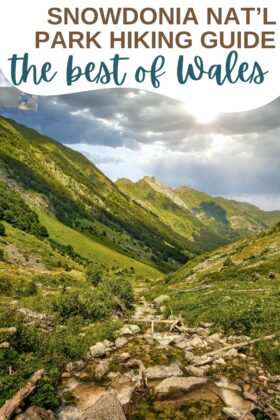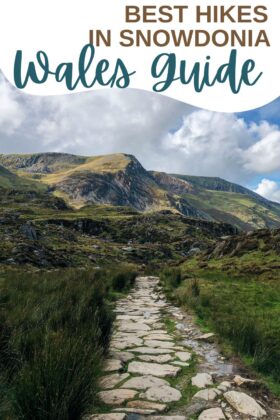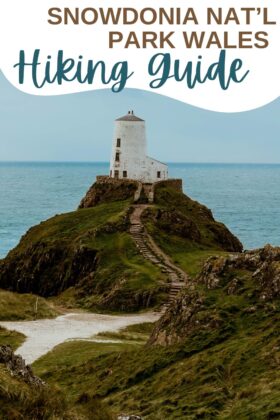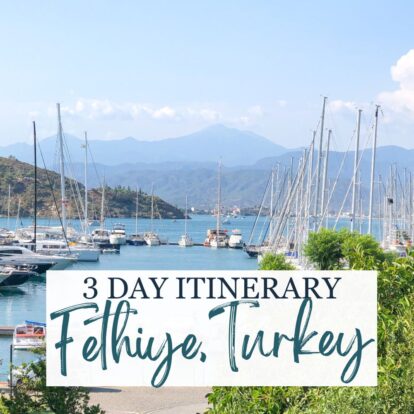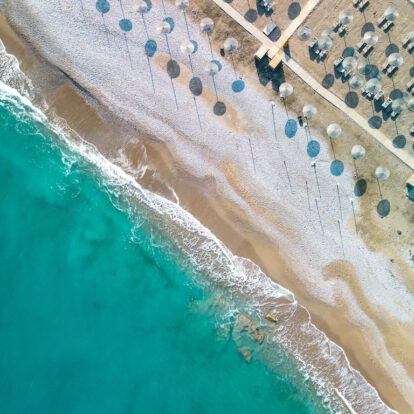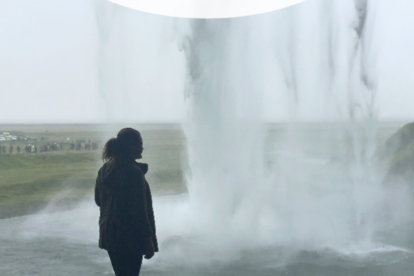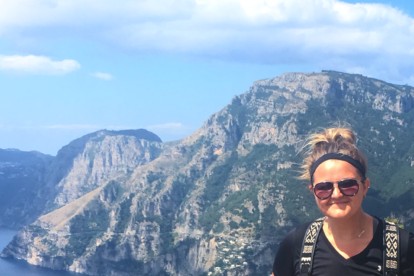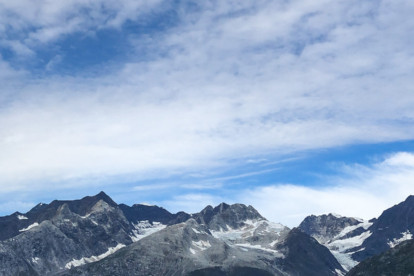Situated up in the northwest corner of Wales, Snowdonia National Park is a popular and unique destination for outdoor enthusiasts. If you’re looking for the best hikes in Wales within Snowdonia, this guide will help you choose! With no shortage of breathtaking landscapes, wildlife, and a plethora of Welsh culture and history, this National Park has something to offer for everyone. Hikers of all experience level will enjoy the rugged mountains, lakes, coastlines and ancient woodlands.
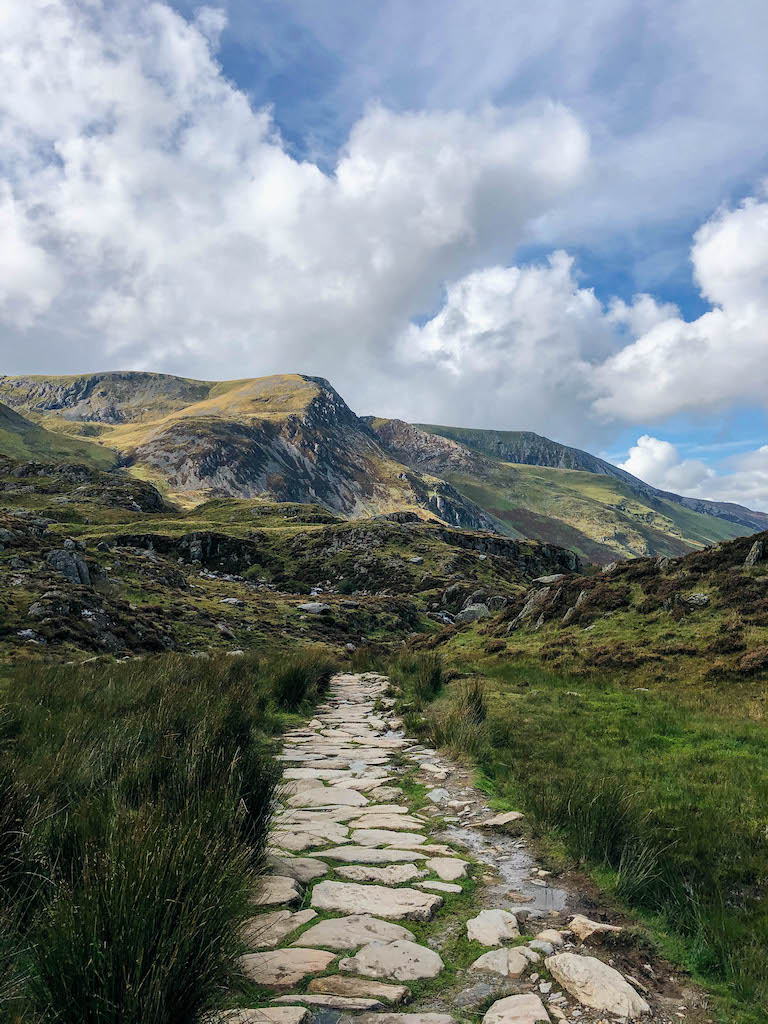
Snowdonia National Park is the largest national park in Wales and covers over 820 square miles, including 37 miles of coastline. Mountains cover over 50% of the park, and the other half is made up of deep river gorges, waterfalls, expansive green valleys, and the area is one of the most varied and beautiful in the UK.
Whether you’re a seasoned long distance hiker, or a casual day hiker, Eryri (the Welsh word for Snowdonia) has something to offer. In this guide, we’ll explore some of the best hikes in Snowdonia, highlighting the most scenic spots, providing information on trailheads, discussing difficulty levels, estimating hike durations, and delving into the historical significance of the park and its trails.
Looking for More Information About Traveling Wales? Check out our post on visiting Portmeirion!
Getting to Snowdonia:
Snowdonia National Park and the hikes within it are best accessed by private vehicle, and is a popular spot for small camper vans. To get to the national park, you have a few options for airports. This is helpful for keeping an eye on flight prices and giving you a variety of options for grabbing a good deal. It’s also helpful to know so you can consider what areas you may want to see on your trip to Snowdonia and fly into the closet airport to explore before or after your time in the park.
- You can fly into Cardiff Airport, which is the capitol of Wales. From Cardiff, Snowdonia is a 3.5 hour drive.
- Flying into Liverpool Airport in England you can be in the national park within 1 hour and 45 minutes.
- Manchester Airport, also in England, is 1 hour and 50 minutes outside of the park.
- The Birmingham Airport is 2.5 hours from Snowdonia.
My favorite way to find the best flight deals (for US and Canadian fliers) is by using Thrifty Travelers subscription service. You can check them out here, and use the code BAILEY20 for $20 off. Or read about the deals I’ve scored using Thrifty Traveler here.
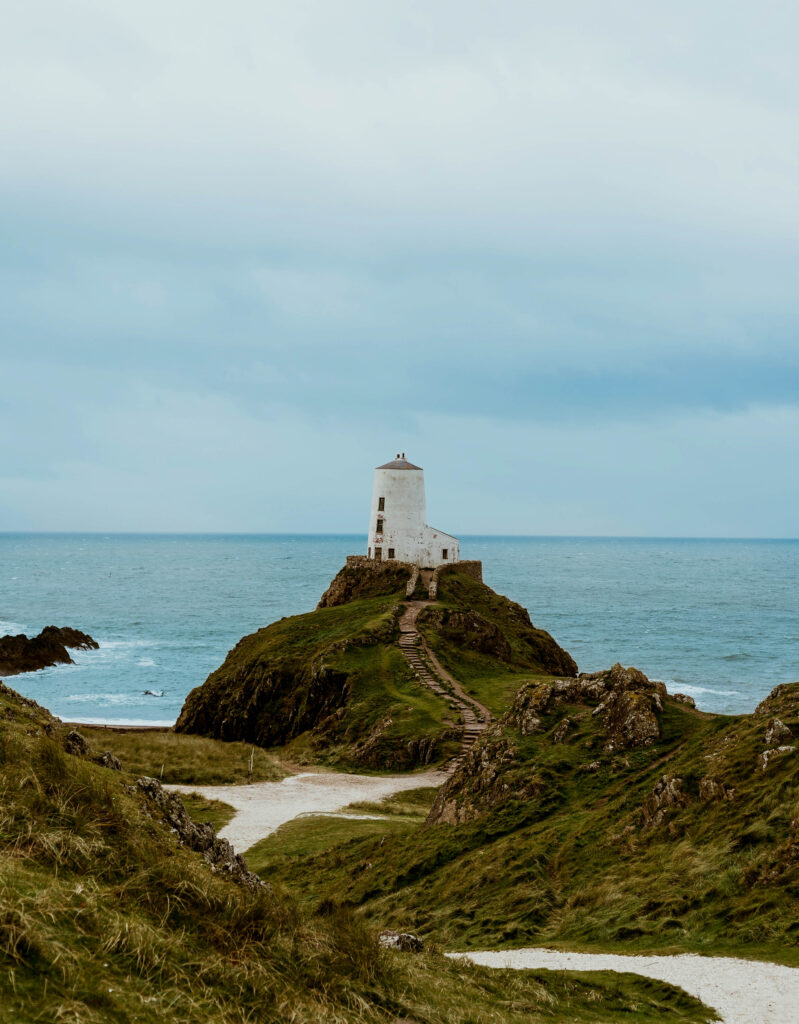
1. Mount Snowdon (Yr Wyddfa)
Overview:
- Height: 1,085 meters (3,560 feet)
- Trailhead: Pen-y-Pass
- Difficulty: Moderate to Challenging
- Duration: 4-6 hours (up and down)
Mount Snowdon, the highest peak in Wales, is a must for anyone visiting Snowdonia National Park. The trail begins at Pen-y-Pass, where you can access various routes to the summit. The Pyg Track, Miner’s Track, and the Llanberis Path are popular choices, each offering a unique perspective of the mountainous landscape.
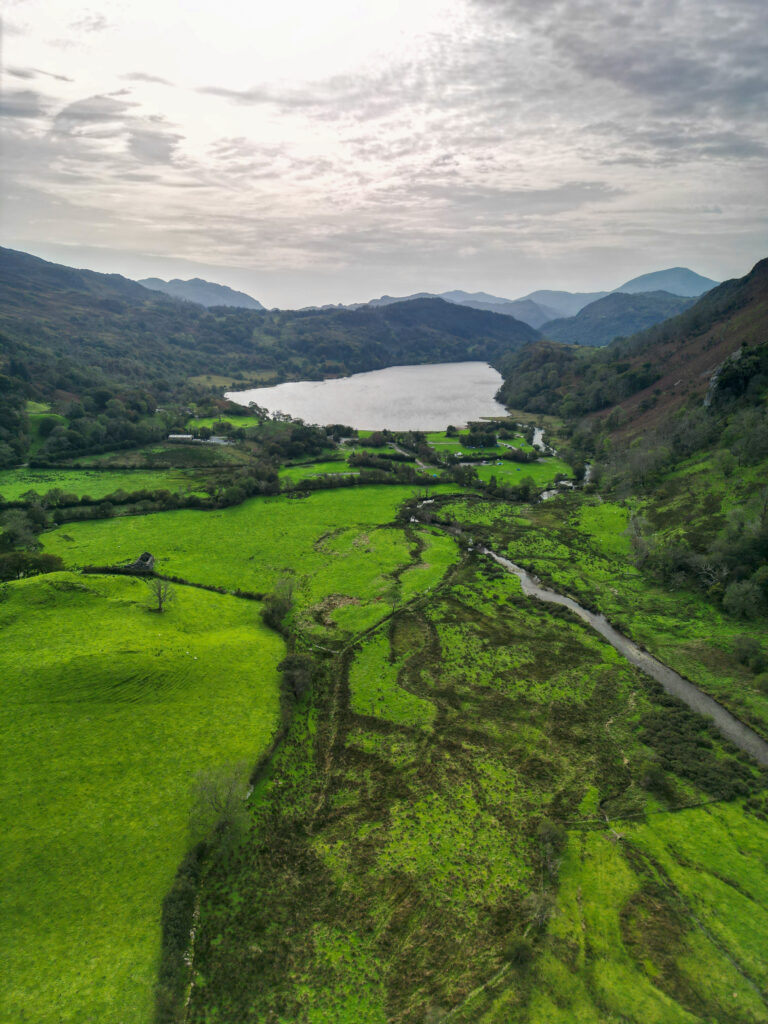
Scenic Spots:
- Glaslyn Lake: About halfway up the Pyg Track, you’ll encounter the stunning Glaslyn Lake, nestled in a glacial cwm (cirque). This serene spot provides an excellent opportunity to rest and absorb the beauty of the surroundings.
- Summit Views: At the summit, you’ll be rewarded with panoramic views of Snowdonia and beyond. On a clear day, you can see as far as Ireland, the Isle of Man, and the Lake District.
How to Get There:
- By Car: Pen-y-Pass has a large car park, but it fills up quickly, especially in peak season. Arrive early to secure a spot.
- Public Transport: Regular buses run to Pen-y-Pass from major towns like Llanberis and Betws-y-Coed.
Historical Tidbit:
- The Snowdon Mountain Railway: If you prefer a less strenuous journey, you can take the Snowdon Mountain Railway from Llanberis to the summit. This historic railway has been operating since 1896 and provides a fascinating perspective on the landscape.
2. Tryfan and the Glyders
Overview:
- Height (Tryfan): 917 meters (3,010 feet)
- Height (Glyder Fach): 994 meters (3,261 feet)
- Trailhead: Ogwen Cottage
- Difficulty: Challenging
- Duration: 6-8 hours (circular route)
For those seeking a more challenging adventure, the Tryfan and Glyder Fach circuit is a thrilling option. The trail begins at Ogwen Cottage, leading you up the iconic Tryfan and onto the majestic Glyder Fach.
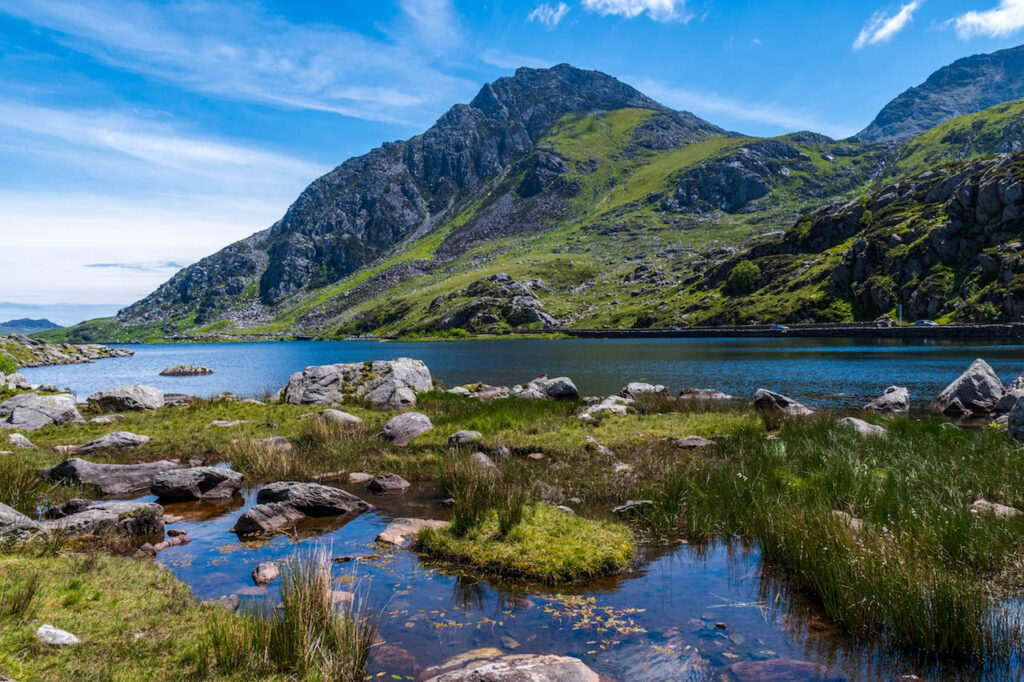
Scenic Spots:
- Adam and Eve: At the summit of Tryfan, you’ll find two large boulders known as Adam and Eve. Brave hikers can make the leap between them—a rite of passage for many visitors.
- Castell y Gwynt: Translating to “Castle of the Winds,” Castell y Gwynt is a distinctive rock formation on Glyder Fach offering stunning views of the surrounding peaks.
How to Get There:
- By Car: Ogwen Cottage has a car park, but it can be busy in peak travel seasons. Arrive early or consider using public transport. Public buses run on a regular schedule to Ogwen Cottage.
Historical Tidbit:
- Legends of Tryfan: According to local legend, Tryfan and its surrounding peaks were once giants. The peaks of Glyder Fach and Glyder Fawr are said to be the petrified remains of two giants, while Tryfan itself is believed to be the sleeping giant.
3. Cwm Idwal and the Devil’s Kitchen
Overview:
- Trailhead: Ogwen Cottage
- Difficulty: Easy to Moderate
- Duration: 2-3 hours (circular route)
If you’re looking for a more relaxed hike with stunning scenery, the Cwm Idwal and Devil’s Kitchen loop is an excellent choice. This circular route takes you through the picturesque Cwm Idwal and along the base of the Glyderau mountain range.
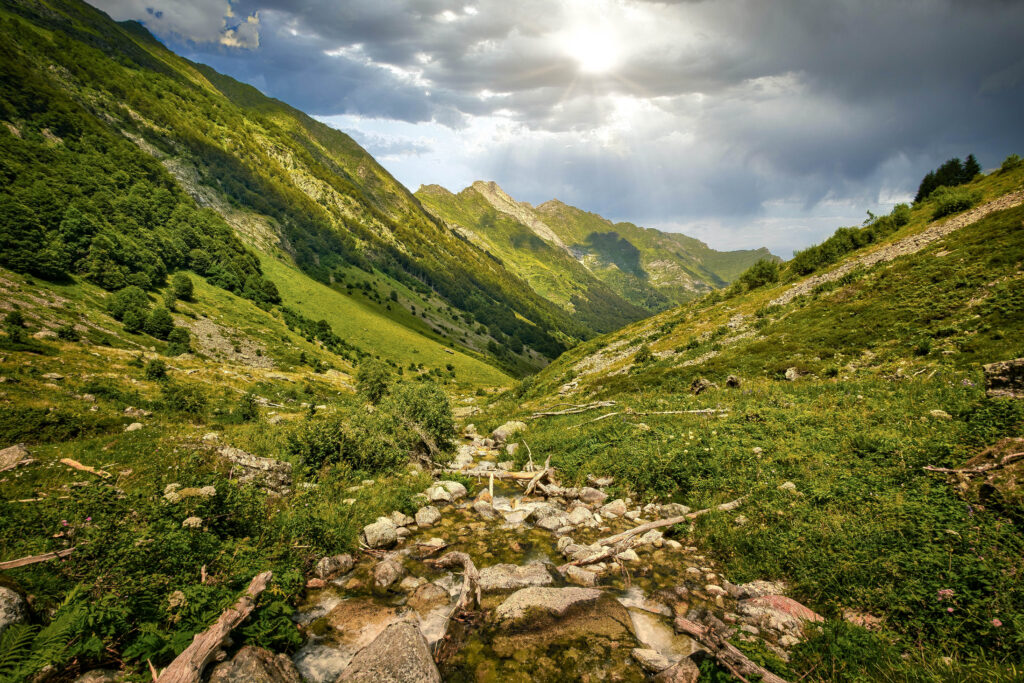
Scenic Spots:
- Cwm Idwal: A glacial amphitheater surrounded by towering cliffs, Cwm Idwal is both geologically and ecologically significant. The area is home to rare arctic-alpine plants and provides a serene setting for a leisurely stroll.
- Devil’s Kitchen: A dramatic gash in the mountainside, Devil’s Kitchen is a popular spot for hikers. The ascent through this rugged landscape offers spectacular views of the surrounding peaks.
How to Get There:
- By Car: Ogwen Cottage serves as the starting point for this hike, and parking is available.
- Public Transport: Buses run to Ogwen Cottage, making it accessible for those relying on public transportation.
Historical Tidbit:
- Cwm Idwal’s Geological Significance: Cwm Idwal is a National Nature Reserve and a Site of Special Scientific Interest (SSSI) due to its geological importance. The rock formations in the area provide valuable insights into the region’s glacial history.
4. The Nantlle Ridge
Overview:
- Length: Approximately 15 kilometers (9 miles)
- Trailhead: Rhyd Ddu
- Difficulty: Challenging
- Duration: 7-9 hours (linear route)
For a more extended and challenging hike, the Nantlle Ridge offers a rewarding experience with stunning views of the Snowdon Massif and the Irish Sea.
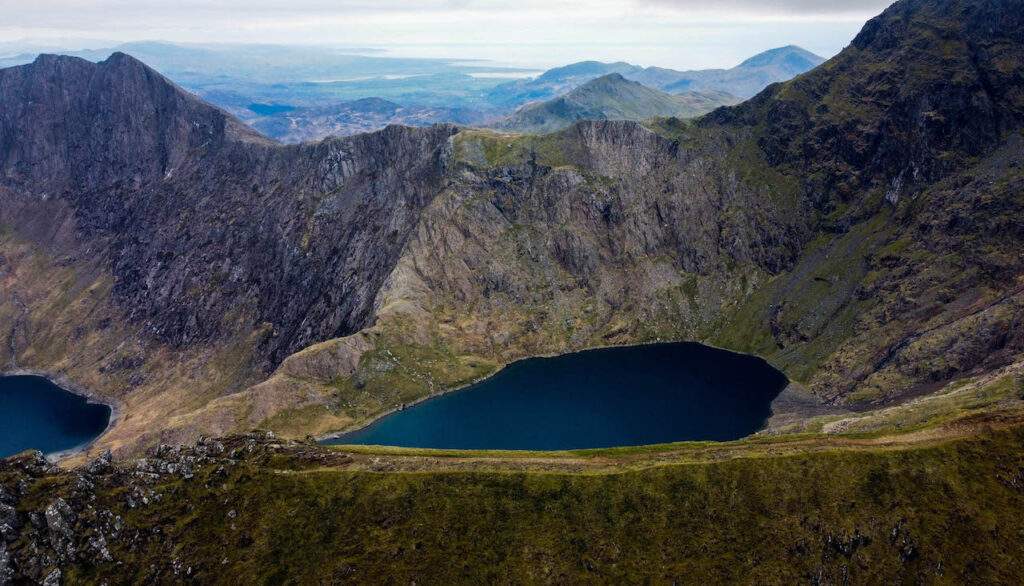
Scenic Spots:
- Y Garn: The first peak along the ridge, Y Garn, provides panoramic views of the Nantlle Valley and the surrounding mountains.
- Trigonos: The highest point on the ridge, Trigonos, offers breathtaking vistas of Snowdon and its neighboring peaks.
How to Get There:
- By Car: Rhyd Ddu serves as the starting point, and parking is available in the village.
- Public Transport: The Welsh Highland Railway stops at Rhyd Ddu, providing a scenic journey to the trailhead.
Historical Tidbit:
- Quarrying in the Nantlle Valley: The Nantlle Valley was once a hub of slate quarrying, and remnants of this industry can still be seen along the route. The quarries played a crucial role in the development of North Wales in the 19th century.
5. Aber Falls and the North Wales Path
Overview:
- Height (Aber Falls): 37 meters (121 feet)
- Trailhead: Abergwyngregyn
- Difficulty: Easy
- Duration: 2-3 hours (linear route)
For a change of scenery, the Aber Falls and the North Wales Path provide a more gentle hike through woodlands and along the enchanting Afon Rhaeadr River.
Scenic Spots:
- Aber Falls: The highlight of the hike, Aber Falls, is a stunning 37-meter waterfall surrounded by lush greenery. Take a moment to enjoy the serenity of this natural wonder.
- Woodland Walks: The trail meanders through woodlands, offering a peaceful escape with the sound of the river as your companion.
How to Get There:
- By Car: Abergwyngregyn is the starting point, and parking is available.
- Public Transport: Buses connect Abergwyngregyn with nearby towns, providing accessibility for those without a car.
Historical Tidbit:
- Aber Falls Quarry: The nearby Aber Falls Quarry, now disused, was once a thriving industry in the 19th century. The remnants of the quarry add a historical touch to the landscape.
Practical Tips for Hiking in Snowdonia
1. Weather Considerations:
Snowdonia’s weather can be unpredictable, with conditions changing rapidly, especially at higher altitudes. Check the weather forecast before setting out, and be prepared for rain, wind, and sudden drops in temperature.
2. Equipment:
Wear sturdy hiking boots and dress in layers. Pack essentials such as a waterproof jacket, map and compass, snacks, water, and a first aid kit. It’s also best to have some sort of emergency phone that doesn’t rely on your network because of the rugged conditions of the park, it’s unlikely you will have much cell reception in many places. For more challenging hikes, consider carrying a walking pole, or poles.
3. Leave No Trace:
Respect the environment by following the principles of Leave No Trace. Stay on designated paths, avoid littering, and be mindful of the delicate ecosystems within the park. Dogs are also allowed, and you will see them often, so if you bring yours with you on your hike, be sure to clean up after them as well.
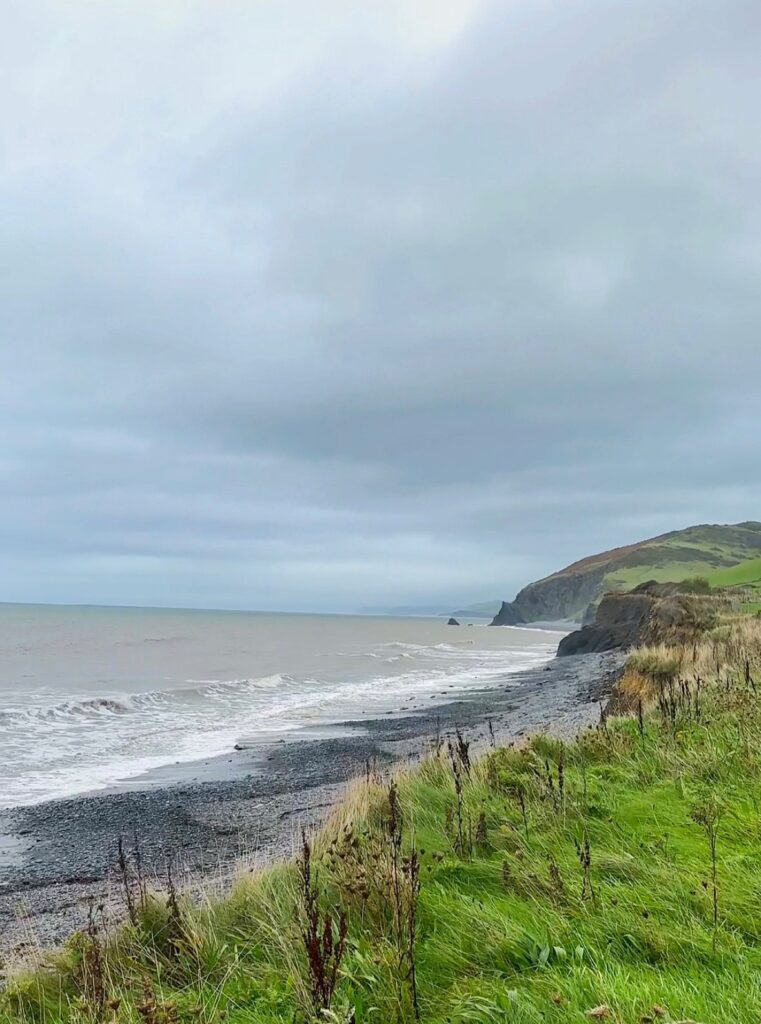
4. Check Trail Conditions:
Before embarking on a hike, check trail conditions and any potential closures. The Snowdonia National Park Authority provides up-to-date information on their website. Because of the steep mountains and deep river gorges, after rainstorms flooding is very common and roads and trails can sometimes be closed as a result.
5. Guided Tours:
If you’re unfamiliar with the area or prefer a guided experience, consider joining a guided hiking tour. Knowledgeable local guides can enhance your understanding of the landscape and ensure a safe journey. There are a plethora of tours and guides available, such as this Hollyhead tour and Anglesey and Snowdonia tour.
Snowdonia’s History
Snowdonia National Park isn’t just a haven for outdoor enthusiasts; it’s also steeped in history and folklore. The region has witnessed the rise and fall of industries, the construction of ancient forts, and the creation of myths that have been passed down through generations.
Slate Quarrying:
In the 19th century, the Nantlle Valley and surrounding areas were at the heart of the slate quarrying industry. The quarries produced high-quality slate that was used in construction worldwide. While many quarries are now disused, remnants of this industry, including abandoned buildings and railways, can still be seen along certain hiking routes.
Iron Age Forts:
The hills and valleys of Snowdonia are dotted with the remains of ancient hillforts, providing a glimpse into the region’s Iron Age history. Castell y Gwynt on Glyder Fach and Dinas Emrys near Beddgelert are two notable examples. These forts offer not only historical significance but also breathtaking views of the surrounding landscape.
Legends and Myths:
Snowdonia is a landscape woven with legends and myths. One of the most famous is the tale of Gelert, a faithful hound belonging to Llywelyn the Great, the medieval Prince of Gwynedd. According to the legend, Llywelyn returns home to find his infant son missing and Gelert with blood around his mouth. Assuming the worst, Llywelyn slays Gelert, only to discover later that the dog had protected the child from a wolf. The grave of Gelert can still be visited in the village of Beddgelert.
The Llanberis Pass:
The Llanberis Pass, a gateway to several of Snowdonia’s peaks, has a rich industrial history. The pass was a route for transporting slate from the quarries to the coast, where it was shipped to various destinations. The ruins of barracks and tramways are visible reminders of this industrial past.
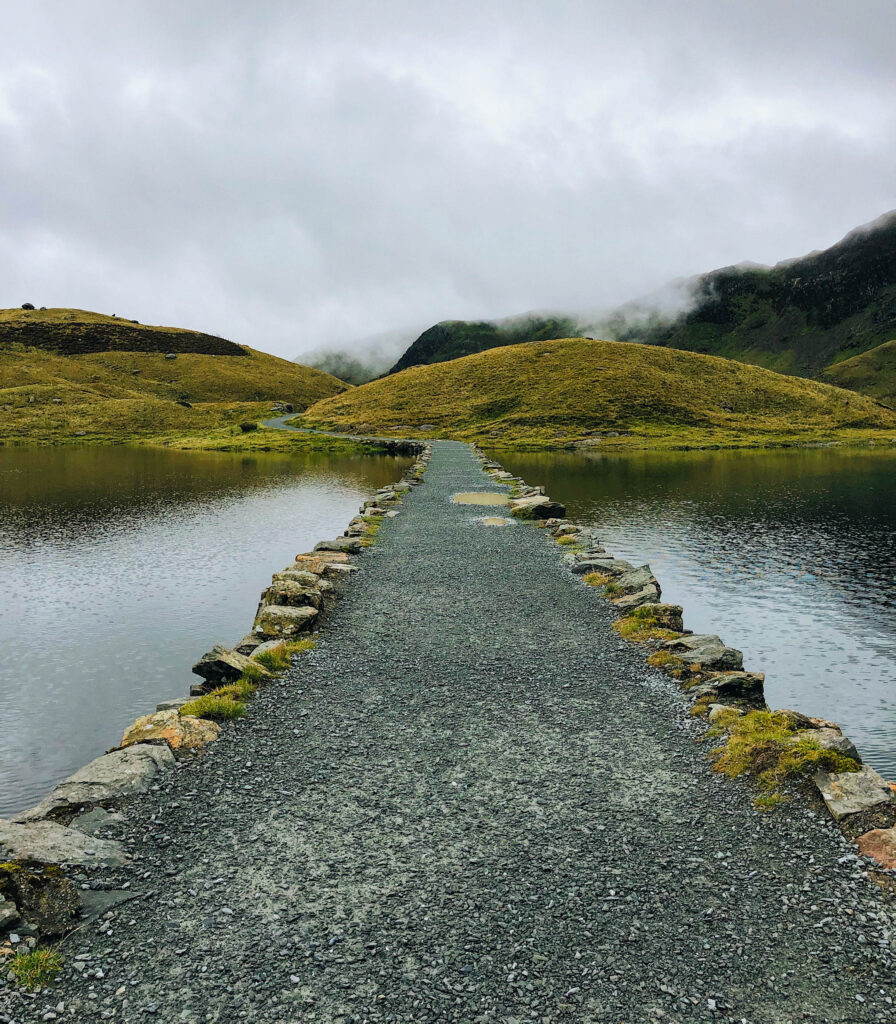
Snowdonia National Park stands as a testament to the raw beauty of nature and the rich history that has shaped the region. Whether you’re conquering the summit of Mount Snowdon, traversing the Nantlle Ridge, or exploring the tranquility of Aber Falls, each hike has something different and new to offer, and is well worth a visit for anyone who loves spending time outdoors!
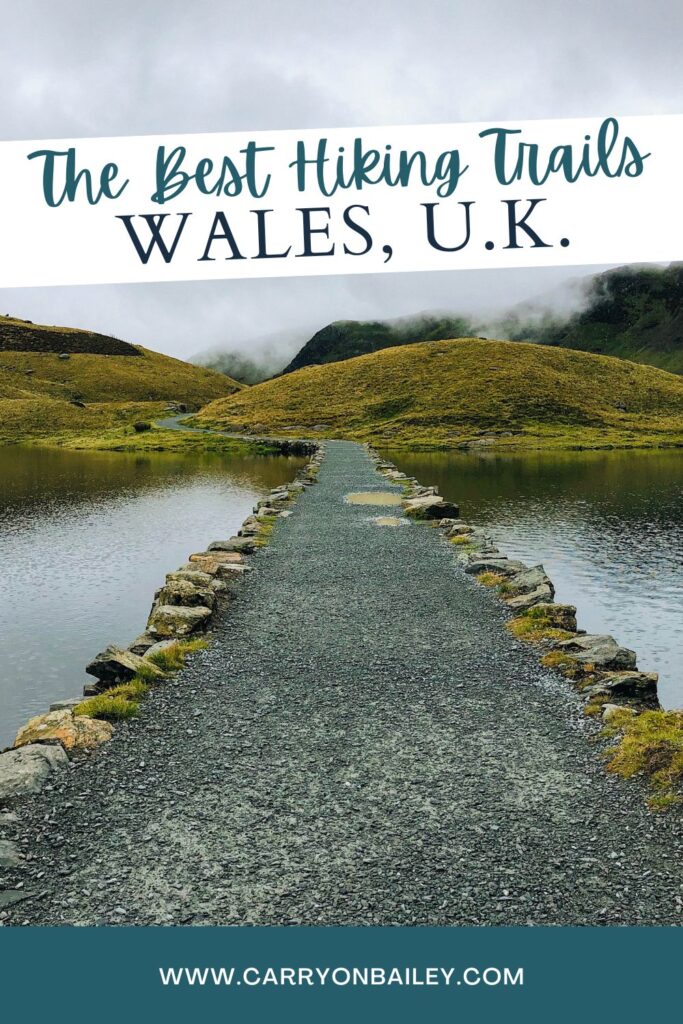
This post on the best hikes in Snowdonia National Park may contain some links that are affiliate links, though products or services are ones I use personally and recommend. When you purchase anything using my links, it costs you absolutely nothing extra, but it does give carryonbailey.com a little financial support which helps to keep this website running. Thank you for your continued support, both with your dollars and your interest.
